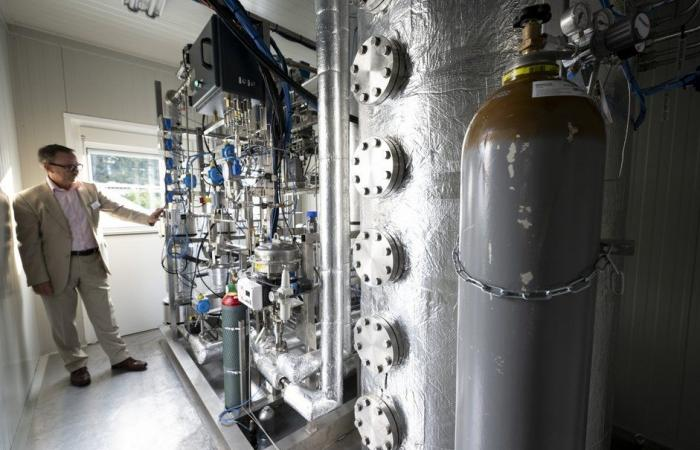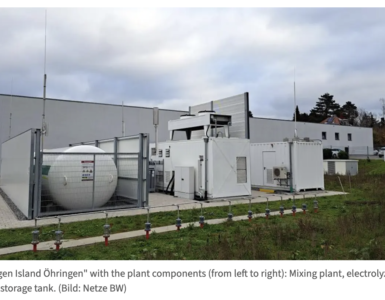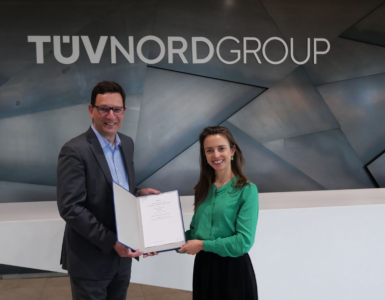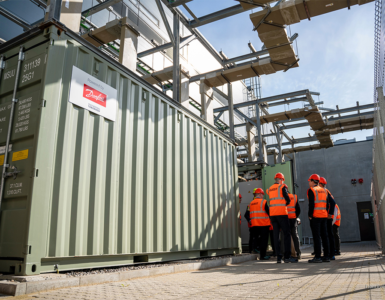Gaznat inaugurates a lab aimed at producing the gas of the future.
Energy Producing carbon-neutral renewable gas2: this is the promise of Gaznat which inaugurated the largest laboratory for the development of this fuel on an industrial scale in French-speaking Switzerland.
Located in the industrial area of Aigle in the Chablais Vaudois, the place is rather discreet, partially concealed by trees and closely watched. And it is there, in the courtyard of the complex, that several large containers accommodate the new installation of power to gas developed as part of the GreenGas project.
Gilles Verdan said:
🔥 What about we co-host a webinar? Let's educate, captivate, and convert the hydrogen economy!
Hydrogen Central is the global go-to online magazine for the hydrogen economy, we can help you host impactful webinars that become a global reference on your topic and are an evergreen source of leads. Click here to request more details
This technology could generate liquid fuel.
René Bautz, CEO of Gaznat said:
It allows for example to transform the excess production of electricity in the summer into gas to store the latter for the winter.
The principle: a quasi-closed circuit recovers carbon dioxide (CO2) emitted by industry and combines it with hydrogen to make methane.
“World Premiere”
The process begins with the generation of current through photovoltaic panels placed on the roofs of Gaznat’s containers and buildings, but could also come from dams, wind turbines or other sources. This electricity runs an electrolyser that separates hydrogen from water.
Roger Nordmann said:
Now or never to invest
At the same time, the CO2 released by a heat engine powered by natural gas producing heat and electricity, is recovered through an industrial-size graphene membrane. It is a sort of sieve. “Developed by EPFL, this prototype is a world first,” says René Bautz.
CO2, which can also be captured on industrial sites, such as cement plants or waste incinerators for example, is then injected with the hydrogen into a methanation reactor, also developed by the university. Clearly, this large cylinder combines these two gases and thus generates methane, and this, in a very efficient way.
CO conversion rate2 in methane in a single pass in the new Gaznat facility
“The conversion rate of CO2 in methane is more than 99% in a single pass”, underlines Gilles Verdan, Network Director of Gaznat and responsible for the GreenGas project. This methane can then be injected into the grid or stored in seasonal reservoirs.
What about the environmental impact? “By capturing the CO2 emitted by industry to make methane, we close the loop”, image René Bautz. The manager acknowledges that there are residual emissions. He adds that losses in transport infrastructure represent less than one percent of the volume.
Soon on the market
The GreenGas project cost 5.8 million francs, including subsidies from the Federal Office of Energy, the research fund of the Swiss Gas Industry Association and the canton of Vaud. The technology could be adapted to generate liquid fuel for transport, already imagines Gilles Verdan.
“By capturing the CO2 emitted by industry to make methane, we close the loop”, Rene Bautz
The reactor is immediately ready for sale and its size and power can be modulated according to customer needs, subject to a few adaptations. The prototype installed on the Aigle site has a capacity of 225 kilowatts, generating 2 gigawatt hours (GWh) per year, which corresponds to the energy needed to heat around 100 homes.
Regarding the graphene membrane, three to five years will still be necessary until it is put on the market. But she could have some success. “Currently, capturing one tonne of CO2 costs between 200 and 500 francs depending on the technology. With this membrane, the price would be reduced to around 50 francs,” says Gilles Verdan.
5.8 million
francs, the cost of the GreenGas project
New hopes
This technology of power to gas raises many hopes at a time of energy transition. Present at the inauguration, Benoît Revaz, the director of the Federal Office of Energy, believes that the emphasis is often placed on renewable electricity and that other approaches are sometimes forgotten. “The transition will not only take place with electrons, but also with molecules.”
Because we must not forget that Switzerland consumes 35 to 40 terawatt hours (TWh) of gas annually. Replacing it won’t be easy. “The annual potential of syngas is estimated at around 20 TWh in the long term”, specifies René Bautz, “to which we must add 7 to 8 TWh of biogas”.
READ the latest news shaping the hydrogen market at Hydrogen Central
Gaznat inaugurates a lab aimed at producing the gas of the future, August 30, 2023








